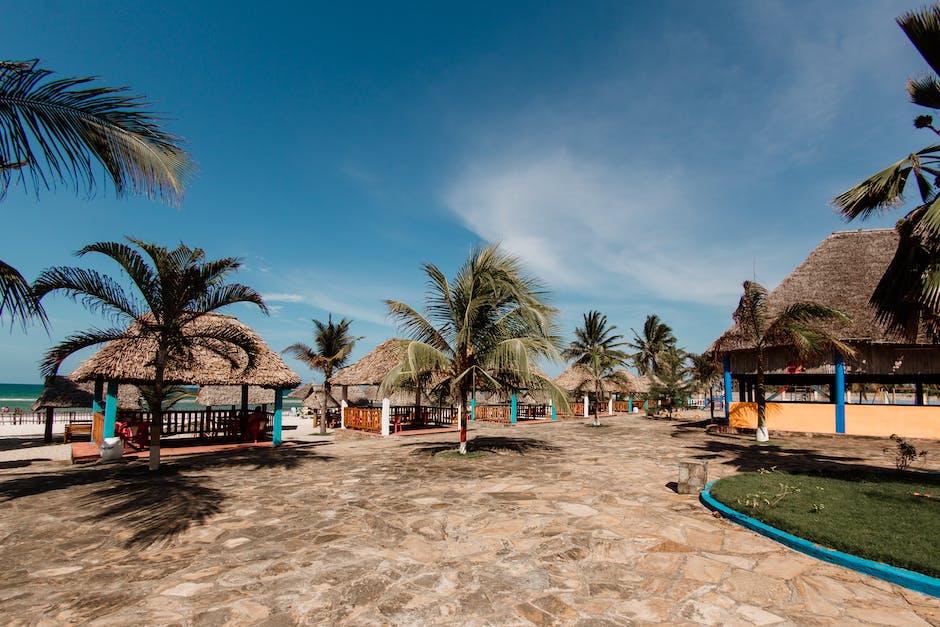A palm tree is a type of Angiosperm, which is a flowering plant. The scientific name for a palm tree is Arecaceae. Palm trees are woody plants that are native to the tropics and subtropics. Palm trees are an important part of the landscape in many countries, such as the Bahamas, Cuba, and Mexico.
Yes, a palm tree is an angiosperm.
What is a palm tree classified as?
Palms are not technically trees, but rather large woody herbs. This is because they are classified as herbs, like their close relatives: grasses, bamboos, bananas, and sedges. For botanists studying plant classification, this makes sense because it is based on shared characteristics.
Palm trees are monocot angiosperms belonging to the family Arecaceae. These are the perennial flowering plants with enclosed seeds. Palm trees can be found in tropical and subtropical regions around the world. The leaves of palm trees are used for thatching, weaving, and other purposes. The fruit of palm trees is an important source of food for many people.
What trees are angiosperms
Angiosperms are a type of tree that have broad leaves that usually change color and die every autumn. Some examples of angiosperms include oaks, maples, and dogwoods. There are also some angiosperms that hold their leaves, such as rhododendron, live oak, and sweetbay magnolia.
The sago palm is a species of gymnosperm that belongs to the family Cycadaceae. The sago palm is not a typical palm, although sometimes mistakenly it is thought to be a palm due to their similarity in features. The sago palm is native to the southeastern United States, Mexico, Central America, and the Caribbean.
Are palm trees male or female?
Palms are a type of tree that can be either male, female, or produce both types of flowers. The male palm tree produces pollen, while the female palm tree produces the ovules that are necessary for fertilization. If a palm tree produces both types of flowers, it is called a hermaphrodite.
In order for palm tree seeds to form, pollen from male palm tree flowers transfers to female palm tree flowers, which develop a fruit with a palm tree seed inside. This is sexual reproduction, and keeps the species genetically flexible by using cross-pollination. By doing this, it helps the palm trees to adapt to their environment and to continue producing offspring.
What plant is not an angiosperm?
Gymnosperms are a type of plant that produces seeds without flowers or fruits. These seeds are often found on the surface of scales or leaves, and are not enclosed within an ovary. Gymnosperm plants include conifers, cycads, Ginkgo, and Gnetales. Angiosperms, on the other hand, are plants that produce seeds that are enclosed within an ovary (usually a fruit).
Conifers are sleek, seed-bearing trees that usually have needlelike leaves. These trees are specially adapted to live in cold, snowy regions where other trees would not survive. The most common conifers are spruce, cedar and pine trees.
What trees are not gymnosperms
Gymnosperms are a type of seed plant that includes conifers, cycads, Ginkgo, and gnetophytes. gymnosperms are characterized by having unenclosed seeds, often borne on cones or leaves. Angiosperms are a type of seed plant that includes the flowering plants, as well as the monocots and magnoliids. Angiosperms are characterized by having enclosed seeds, which are often borne on fruits.
Grains, including rice, corn, and wheat, are examples of Angiosperms. In these plants, pollination is carried out by the wind. Other examples of Angiosperms include roses, lilies, broccoli, kale, petunias, eggplant, tomato, peppers and sugarcanes.
Why are palms angiosperms?
Palm trees are a type of angiosperm, which means that they produce both seeds and flowers. The flowers of a palm tree emerge from the trunk right below the crown of leaves, and the tree’s seeds are always covered with fruit.
Fabaceae is the third largest angiosperm family, with around 19,000 species. The family is known for its diverse array of flowers, as well as for its economic importance. Many species in the family are used as food crops, including beans, peas, and peanuts. The family also includes a number of important timber and fodder trees, such as acacia and eucalyptus.
What are 4 examples of gymnosperms
Gymnosperms are a group of plants that do not produce flowers and instead produce cones. Most conifers, such as pine trees and cypress trees, are gymnosperms.
There are two main differences between conifers and deciduous trees:
1. Conifers are gymnosperms and deciduous trees are angiosperms.
2. Deciduous trees lose their leaves in the winter, while conifers do not.
There are exceptions to both of these rules, however. Some angiosperms keep their leaves in the winter (such as live oak, sweet bay magnolia, and rhododendron trees), and some conifers shed their leaves in the winter (such as larch and bald cypress).
What is an example of a gymnosperm plant?
Gymnosperms are seed-bearing vascular plants that do not have their seeds enclosed in an ovary. The term “gymnosperm” comes from the Greek word gymnospermos, meaning “naked seeds”. Gymnosperms include cycads, ginkgoes, yews, and conifers.
The balls on the top of palm trees are the result of the palm tree’s healthy reproductive cycle. The tree produces these fruits to attract animals that will eat them and spread the tree’s seed. This cycle is important for the tree’s survival and propagation.
Is a palm tree a tree or flower
A tree is a woody perennial plant with a single main stem or trunk. This stem or trunk generally grows to more than 20 feet tall. Palms are woody perennials with a single main stem. When these palms surpass 20 feet in height, they qualify as trees.
Heart a palm is the growing tip of the palm tree normally it comes like Costa Rica has little tiny hearts on the end of their palm trees.
Conclusion
Yes, a palm tree is an angiosperm.
After investigating the topic, it can be concluded that a palm tree is in fact an angiosperm. This is due to the presence of flowers and fruits on the tree, as well as the fact that it is a seed-bearing plant.

My interest in trees started when I first saw the giant sequoias in Yosemite.
I was a teenager then, and I remember thinking, “I need to learn more about this.”
That moment stuck with me.
A few years later, I went on to study forestry at Michigan Tech.
Since graduating, I’ve worked in a mix of hands-on tree care and community education.
I’ve spent over ten years helping people understand how to plant, maintain, and protect the trees in their neighborhoods.
I don’t see trees as just part of the landscape.
They are living things that make a real difference in our daily lives.
